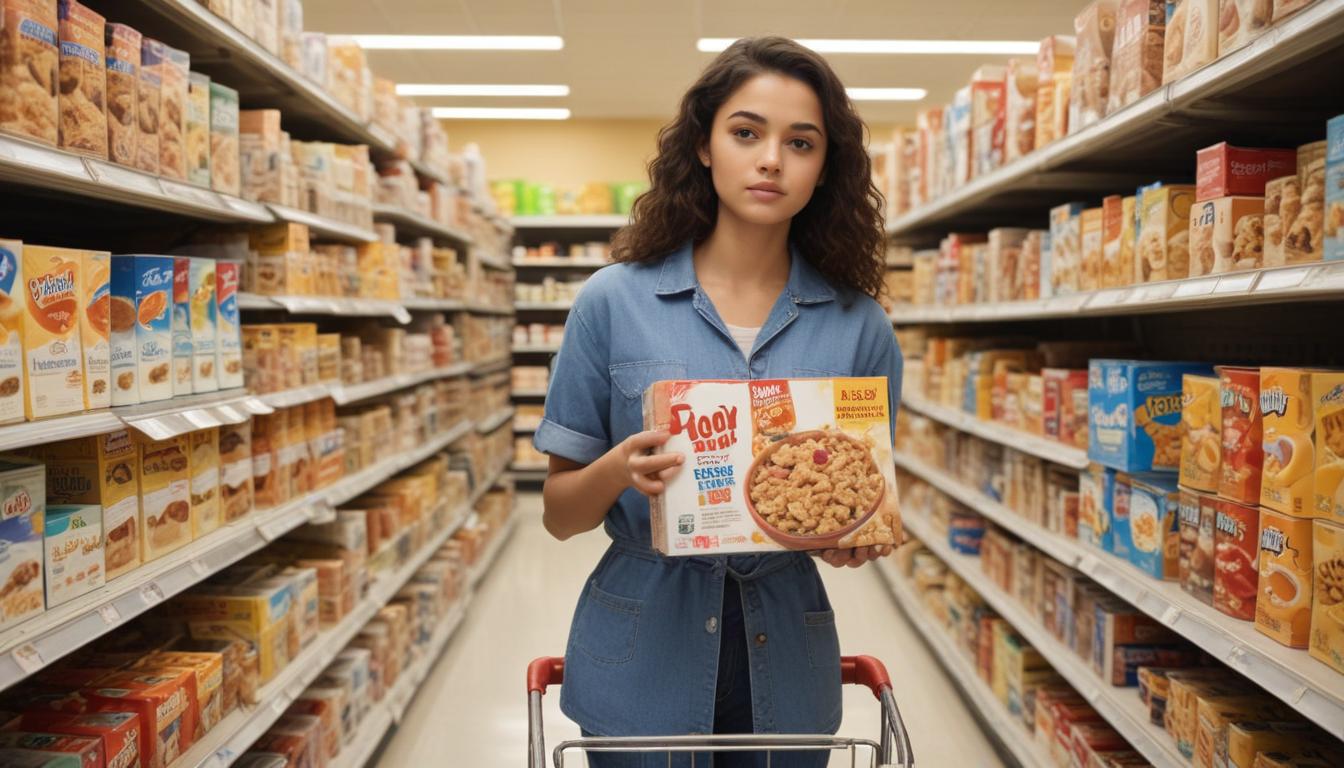Now Reading: Decode Your Food Labels
- 01
Decode Your Food Labels
Decode Your Food Labels

Understanding Food Labels Making Informed Choices
Walking down the grocery aisle can feel like a pop quiz you didn’t study for. You’re holding two boxes of cereal, both claiming to be a healthy start to your day, but the labels are a confusing jumble of percentages, grams, and unpronounceable ingredients. You want to make the best choice for you and your family, but the overwhelming amount of information and flashy marketing claims leave you feeling more stressed than confident. This frustration is a shared experience for so many shoppers who are simply trying to navigate the complex world of nutrition.
Consider this your official cheat sheet. This guide is designed to cut through the noise and empower you with the knowledge to read any food label with clarity and confidence. We will break down each section of the label, from the nutrition facts panel to the ingredient list, and demystify the health claims that so often cause confusion. By the end, you will be able to quickly assess a product and make an informed choice that aligns with your health goals, turning grocery shopping from a chore into a powerful act of self-care.
The Anatomy of a Nutrition Facts Panel
The Nutrition Facts panel is your single most reliable source of information on a packaged food product. While the front of the box is designed to sell you something with appealing images and buzzwords, the back is where the unvarnished truth lies. Learning to quickly scan this panel is the most important skill you can develop for making healthier choices. It provides a standardized snapshot of a food’s nutritional content, allowing you to compare products accurately and understand exactly what you are consuming.
Before you look at calories, fat, or sugar, your eyes should go to the very top of the panel to find the Serving Size and Servings Per Container. This information is the key that unlocks the rest of the label. Food manufacturers can make a product seem healthier by using an unrealistically small serving size. That small bag of chips might only list 150 calories, but if the bag contains three servings, eating the whole thing means you’ve consumed 450 calories. Always ask yourself if the listed serving size is realistic for how you would eat the food, and do the mental math if you plan to eat more.
Key Nutrients to Limit and to Get Enough Of
Once you understand the serving size, you can properly evaluate the nutrients. The panel is cleverly designed to guide you. The nutrients listed first are generally the ones you want to limit, including Saturated Fat, Trans Fat, Sodium, and Added Sugars. Of these, paying attention to Added Sugars is particularly crucial. The “Total Sugars” line includes both naturally occurring sugars (like those in fruit and milk) and sugars that were added during processing. The “Added Sugars” line isolates the latter, giving you a clear picture of how much extra, non-essential sugar is in the product. Aim to keep this number as low as possible.
Further down the panel, you will find the nutrients you want to get more of, such as Dietary Fiber, Vitamin D, Calcium, Iron, and Potassium. These are vital for overall health, and many people do not get enough of them in their daily diet. Dietary fiber, for instance, is essential for digestive health and can help you feel full and satisfied, while calcium and vitamin D are critical for strong bones. When comparing two products, like different brands of bread or yogurt, a quick glance at these numbers can help you choose the one that offers more nutritional bang for your buck.

Decoding the Ingredient List
If the Nutrition Facts panel is the “what,” the ingredient list is the “how.” This is where you see exactly what a product is made of. The most important rule to remember is that ingredients are listed in descending order by weight. This means the first three to five ingredients make up the vast majority of the product. If sugar, or one of its many aliases, is listed as one of the first ingredients, you can be sure the product is high in sugar, regardless of any health claims on the front.
This list is also where you can spot whole foods and uncover hidden additives. For example, when buying bread or crackers, look for the words “whole grain” or “whole wheat” as the very first ingredient. Terms like “wheat flour” or “enriched flour” simply mean it’s a refined grain that has been stripped of its most nutritious components. Likewise, familiarize yourself with the many names for sugar (like high-fructose corn syrup, dextrose, sucrose, cane juice) and unhealthy fats (like hydrogenated or partially hydrogenated oils) to become a true food detective.
Understanding Common Health Claims
The front of the package is prime real estate for marketers. It’s covered in claims designed to catch your eye and convince you of a product’s health benefits. However, many of these terms are loosely regulated and can be misleading. Words like “Natural,” “Multigrain,” or “Made with Real Fruit” sound good, but often have little meaning. A product can be labeled “Natural” and still be packed with sugar and sodium. “Multigrain” simply means it contains more than one type of grain; it does not mean those grains are whole.
Some terms, however, do have specific, government-regulated definitions. A product labeled “USDA Organic” has met strict standards for how it was grown and processed. Claims related to fat and sugar also have legal meanings. “Fat-Free” means a product has less than 0.5 grams of fat per serving, while “Low-Fat” means it has 3 grams or less. Be cautious, though; when manufacturers remove fat, they often add sugar and salt to improve the taste. Similarly, “No Added Sugar” means no sugar was added during processing, but the product could still be high in natural sugars. Always turn the package over and let the Nutrition Facts and ingredient list tell you the full story.


































